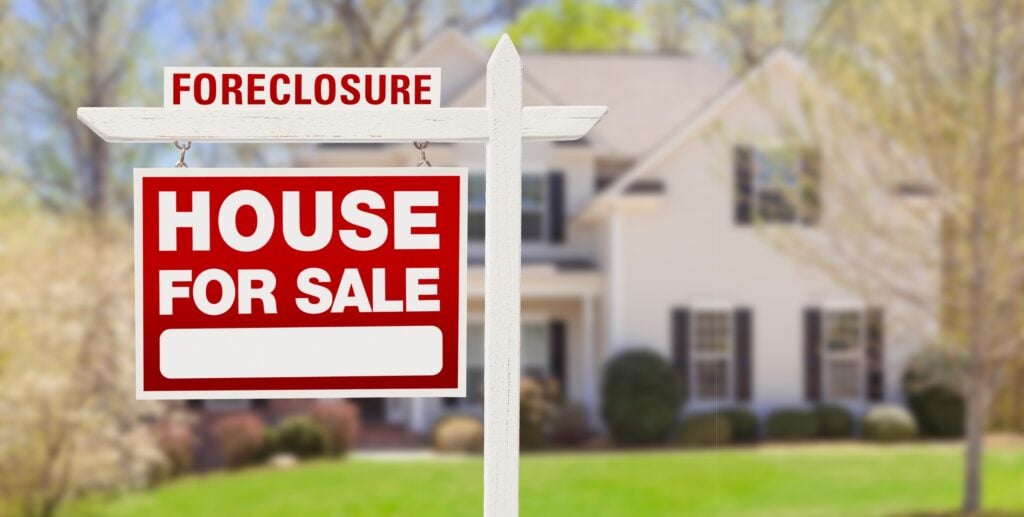Buying a home is an exciting milestone, especially when considering older properties with character and history. But older homes often hide problems that aren’t immediately visible. From aging systems to structural concerns, knowing the top hidden issues in older homes can help buyers make smarter decisions, avoid costly surprises, and feel confident throughout the purchase process.
In this guide, we’ll highlight the most common hidden issues, show what buyers can spot before an inspection, and share expert tips on which problems are minor fixes versus major red flags—whether you’re buying a home in Boston, MA or dealing with humid summers in Atlanta, GA.
In this article:
The most common issues in older homes
Decade-by-decade red flags
What buyers can spot before the inspection
What’s a quick fix vs. a red flag?
Planning ahead – smart upgrades for older homes
Final thoughts: Common hidden issues in older homes
Common hidden issues in older homes FAQs
The most common issues in older homes
Older homes have charm and character, but they can also come with maintenance challenges that newer properties don’t face. Understanding the most common issues in older homes can help buyers make informed decisions and prepare for potential repairs.
Structural and foundation issues:
1. Cracks in the foundation or walls
2. Uneven or sloping floors
3. Sagging ceilings or doorframes that don’t close properly
Even minor structural concerns can hint at bigger problems beneath the surface, so it’s important to have a professional inspection.
Roofing and exterior wear:
4. Leaking or missing shingles
5. Aging gutters and downspouts
6. Worn siding or brickwork
Replacing old roofs is a major expense, and water damage from faulty roofing can affect both the interior and the home’s overall value.
Plumbing and water systems:
7. Outdated pipes (like galvanized or polybutylene)
8. Slow drains or hidden leaks
9. Water heater nearing the end of its lifespan
A small leak may seem harmless, but it can lead to mold growth or foundation issues if left unaddressed.
Electrical and HVAC systems:
10. Knob-and-tube or aluminum wiring
11. Older circuit breakers that may not meet modern safety standards
12. Aging furnaces or air conditioning units
Upgrading these systems ensures safety and energy efficiency while reducing future repair costs.
Hidden moisture and mold:
13. Water stains in basements, crawl spaces, or attics
14. Musty odors that indicate mold or mildew
15. Poor drainage around the foundation
Moisture issues can be subtle but often have long-term consequences, from structural damage to health concerns.
Decade-by-decade red flags
Older homes aren’t all the same. Building materials, construction methods, and safety standards have changed over the decades. Knowing what to look for when buying an older home from different eras can help buyers spot potential problems early.
Nick Gromicko, Certified Master Inspector and founder of InterNACHI, the world’s leading association for home inspectors, adds that some of the biggest hidden risks come from materials and systems no longer used today. “Homes constructed prior to 1978 may contain lead paint. Lead pipes were also used in homes up until the late 1940s, and they may allow lead to leach into drinking water. Asbestos insulation was common between 1930 and 1950, which can increase the chances of developing lung cancer and mesothelioma.”
1950s and earlier
16. Asbestos: Often found in insulation, floor tiles, and roofing materials.
17. Lead paint: Common in walls and trim before it was banned in 1978.
18. Outdated wiring: Knob-and-tube electrical systems may still be present.
1960s–1970s
19. Aluminum wiring: Can pose fire risks if not properly maintained.
20. Polybutylene plumbing: Known to leak and cause water damage.
21. Single-pane windows: Poor insulation leading to higher energy costs.
1980s
22. Roofing and siding wear: Materials from this era may be reaching the end of their lifespan.
23. Older HVAC systems: Less energy-efficient and prone to breakdowns.
24. Foundation settling: Homes built during this period sometimes have minor settling issues.
1990s–early 2000s
25. Deferred maintenance: Many homes may have aging components that were inexpensive to install but now need replacement.
26. Outdated electrical panels: Can struggle to support modern energy demands.
27. Water damage in basements or attics: Improper drainage or roof wear can lead to hidden leaks.
Nick Gromicho also notes that outdated wiring is one of the most frequent hazards in older homes, “Knob-and-tube wiring was used from about 1880 to the 1940s, and from 1965 to 1973 single-strand aluminum wiring was sometimes used. Both can pose fire risks if not addressed.”
What buyers can spot before the inspection
While a certified home inspector will uncover the full picture, savvy buyers can still pick up on clues that hint at bigger issues during showings or open houses.
Cracks in walls, sticking doors, or sloping floors may suggest structural concerns. Water stains, musty odors, or damp spots can point to leaks or drainage problems. Outdated features—like two-prong outlets, old HVAC systems, or visibly rusted pipes—often indicate that larger updates may be needed. Even cosmetic issues such as peeling paint or sagging ceilings can sometimes signal underlying problems.
Nick Gromicko suggests looking for outdated electrical systems as well, “Homes in the U.S. built before 1962 were not constructed with three-slot grounded receptacles, and homes built before the 1970s may not have GFCI protection. These safety upgrades are worth noting before you buy.”
By keeping an eye out for these red flags, buyers can ask targeted questions, request additional inspections if needed, and gain confidence before making an offer. Remember: these clues don’t replace a professional inspection, but they can highlight areas that deserve closer attention.
What’s a quick fix vs. a red flag?
Not every issue in an older home is a dealbreaker. Understanding the difference between minor cosmetic problems and major red flags can help buyers prioritize repairs and make smarter purchasing decisions.
Quick fixes (usually low cost and easy to address)
- Worn paint or wallpaper
- Stained or outdated carpeting
- Minor caulking or grout repairs
- Loose cabinet handles or door knobs
These issues are mostly cosmetic and won’t affect the structural integrity or safety of the home.
Red flags (major concerns that require professional attention)
- Structural damage: foundation cracks, sagging beams, or uneven floors
- Outdated or unsafe wiring, such as knob-and-tube or aluminum wiring
- Major plumbing leaks or corroded pipes
- Roof leaks, significant water damage, or mold growth
- HVAC systems or water heaters near the end of their lifespan
Gromicko adds that abandoned fuel systems are another often-overlooked red flag, “Buried oil tanks were often abandoned and forgotten after homes switched to newer fuel sources. They can leak over time and cause serious problems if not removed properly.”
Tip for buyers: A home inspector can confirm which issues are minor and which require immediate attention. Knowing the difference helps you make informed offers and plan for future repairs.
Planning ahead – smart upgrades for older homes
Buying an older home doesn’t have to be overwhelming. With a little foresight, you can prioritize upgrades that improve safety, efficiency, and long-term value.
Electrical and safety updates: Ensuring your home meets current safety standards protects your family and prevents future headaches.
- Replace outdated wiring or panels
- Install modern smoke and carbon monoxide detectors
- Upgrade lighting to energy-efficient fixtures
Plumbing and water systems: Modern plumbing reduces the risk of water damage and improves daily convenience.
- Replace old pipes prone to leaks or corrosion
- Upgrade water heaters to energy-efficient models
- Address slow drains or low water pressure
HVAC and energy efficiency: These improvements lower utility bills and make your home more comfortable year-round.
- Service or replace aging furnaces, air conditioners, or ductwork
- Add insulation or upgrade windows for better energy efficiency
- Consider smart thermostats or other energy-saving upgrades
Cosmetic and functional enhancements: Cosmetic upgrades increase both enjoyment and resale value, but they should come after addressing structural or safety concerns.
- Update kitchens or bathrooms for style and usability
- Refinish or replace flooring as needed
- Refresh paint, trim, or cabinetry
By planning upgrades strategically, buyers can enjoy the charm of an older home while minimizing surprises, protecting their investment, and creating a space that suits their lifestyle.
Older homes have charm, but they can hide costly problems. By knowing the top hidden issues in older homes, spotting red flags early, and working with a certified inspector, buyers can make smarter, more confident decisions.
Bonus tip from Nick Gromicko: To help first-time homebuyers, InterNACHI is offering something exclusive to Redfin readers: Simply email nick@internachi.org with your shipping address and they will send you a free copy of their Home Maintenance Book.
Are older homes more expensive to maintain than newer homes?
Not necessarily, but older homes can require more frequent updates to plumbing, electrical, roofing, and HVAC systems. Proper inspections help buyers anticipate costs.
Do all older homes have hidden issues?
While many older homes have some maintenance needs, not every home has major problems. A professional inspection helps identify which issues are significant.
How can I tell if an older home has outdated safety features?
Look for old wiring, missing smoke detectors, or knob-and-tube electrical systems. Inspectors can also identify hazards like lead paint or asbestos.
Can hidden issues in older homes affect resale value?
Yes. Structural problems, outdated systems, or water damage can lower a home’s value and make it harder to sell. Addressing them early protects your investment.
Are there common hidden issues that aren’t obvious even during a home inspection?
Some problems, like termite damage or hidden mold behind walls, may require specialized inspections or tests beyond a standard home inspection.



















 English (US) ·
English (US) ·